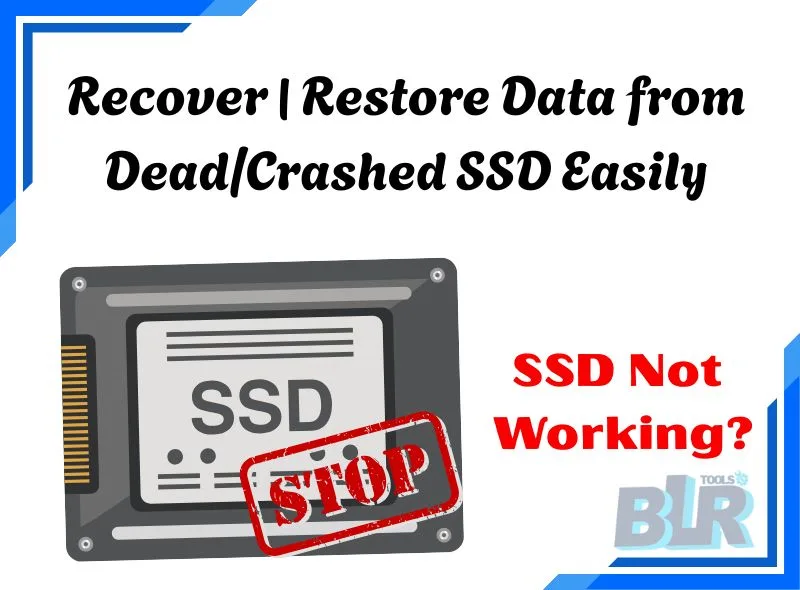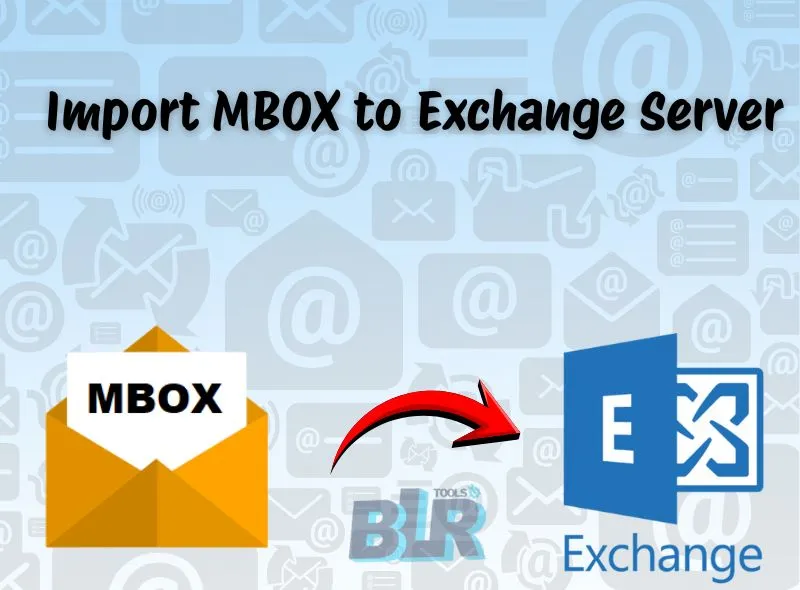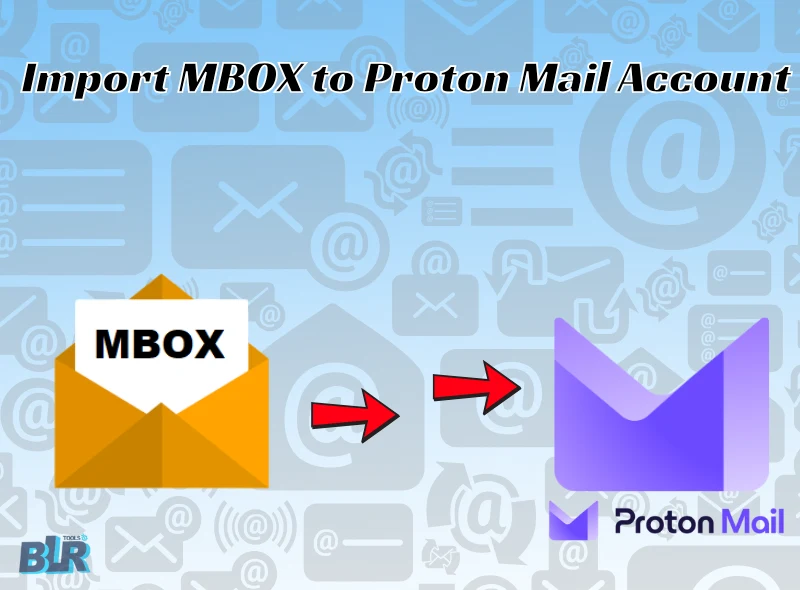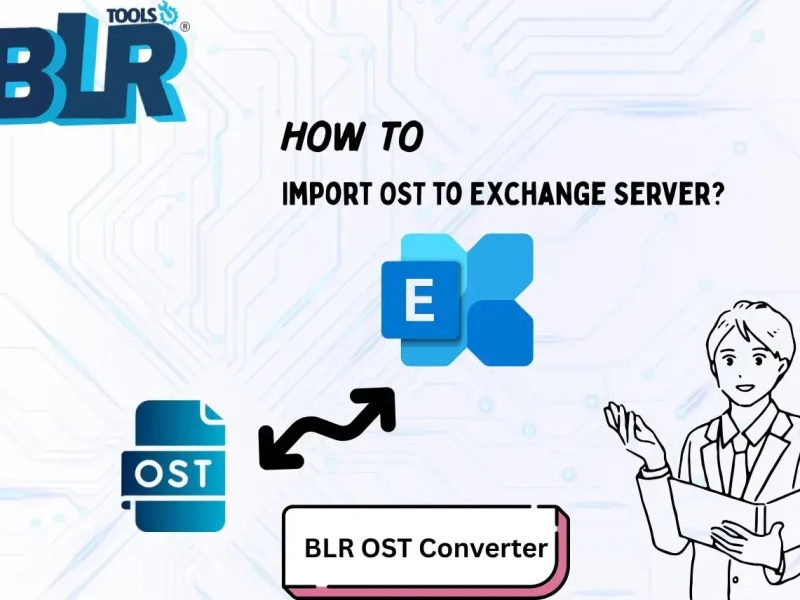Introduction: Recovering data from a failed/crashed/dead SSD can be a difficult process for every user. SSDs can fail for various reasons, such as controller chip failure, firmware corruption, damaged flash memory, and many other reasons. If your SSD Not Working or becomes undetectable by the computer operating system. In this blog, users will know the common SSD failure scenarios or top data restorer solution to recover data from a dead/crashed SSD drive easily.
Common Signs: When SSD Not Working/Failed or Crashes? Know Here-
There are you will know the what is the main reasons or causes why users’ SSD drives aka (Solid-state drive) break, fail or crash.
SSD Not Detected in BIOS or File Explorer
In most scenarios, SSD fail when you no longer “see” the drive. Users can see this as an indication of the complete failure of the SSD. Users will notice this when:
- The computer’s BIOS and UEFI settings do not clearly display SSD.
- The drive is missing from OS File Explorer. Whether it’s Windows or Finder on macOS.
- The system boots up with a pop-up message like “no bootable device found.”
System Freezes or Shows Boot Errors
A failed SSD will make your computer unstable or unreliable. When you trying to read or write data in SSD drive. This action might also lead to troublesome performance issues.
- When you force a computer restart, the system freezes at random.
- If a computer displays a blue screen of death (BSOD), does not to boot up correctly or gets locked in a boot loop.
- Somehow, data unpredictably becomes corrupt or disappears
Strange Noises from SSD or Sudden Shutdowns or Stop Working
Unlike the old hard drive, SSDs have no moving parts or should be quiet. If you hear clicking, grinding, or whirring noises, then it’s probable it’s coming from another part such as a fan or power store. An already failed SSD makes the whole system crash. I suggest you pay attention when
- Suddenly shuts down without warning while you are checking or using your SSD drive.
- In case the SSD has been manually restarted.
Main Reasons for SSD Not Working or Data Loss
SDs may make errors or lose data due to a number of reasons. Sudden failure in power to internal malfunction of parts. Common causes to secure your data in SSD drives.
Power downpour| Inappropriate shutdown
Any random loss of power or electrical spikes can corrupt the information in your SSD. Internal components could take damage from the electrical current during a power surge. Write cycles can be shut down by a wrong shutdown, such as unplugging the computer or power outage. Data corruption or file system errors will result from it.
File system corruption
On SSD drive, the file system decides how this data is kept or accessed. If the system becomes corrupted, it will also cause data loss or also make the drive unreadable. This issue happens because of software bugs, malware, or improper shutdown.
Firmware | Controller Issues with SSD
Data flow is controlled by controller chip, or firmware is SSD’s operating system. These components malfunction in the SSD drive; that’s why it can become completely inaccessible. Firmware bugs can become the main reason that drives stop working. A defective controller might lead to interruption PC to access or read SSD and data files.
Personal Physical damage | Overheating SSD Drive
SSD storage devices are more reliable, faster, durable than old level of technology based hard drives, but sometimes they are not indestructible. If you drop your laptop, it has a direct impact to your SSD drive which can cause physical damage to the circuit board or memory chips. Overheating can also make the SSD not working. As users know that SSD drives can handle some heat and prolonged exposure. High temperatures can spoil your flash memory cells or other elements over time.
Can I Recover Data from Dead/Crashed SSD Drive?
Yes, definitely anyone can get back data from Dead/Crashed SSD with ease, but the possibilities are there of failure in recovery of lost data from SSD that is malfunction internally/physically. SSD data restorer is easier for logical hard drive failures than physical failures.
Understanding Logical vs. Physical Failure
- Logical failure: This issue happens when the SSD hardware is fine, but data is inaccessible because of software. For example, use a corrupted file system, accidental deletion, virus attacks, etc. In these cases, the SSD drive is often detected by the computer, but data cannot be read.
- Physical failure: This develops when the hard drive part fails due to an issue with the hardware. For example, using a faulty controller chip, damaged NAND flash memory chips, a failed power component, etc. Users face physical failure in the drive when the computer typically doesn’t detect the SSD.
The possibilities of Restoration by Type of Problem
The chance of successful data restor is very high in logical failures. One can go with reliable data restorer software to scan the SSD drive and recover the files. To keep the files, you would prefer to recover from being overwritten by new data, it is vital that you stop using the drive right away. If users want to recover data in physical failure, then it depends on the severity of damage. In this failure users need to send the SSD drive to a professional data restorer service, because they have the best equipment or facilities to safely recover or read and write data and files from SSD that is not working.
DIY Methods: Recover | Restore Data from Non-Working SSD
SSD data restorer with a non-working method can be tricky, but users can follow some do-it-yourself (DIY) methods to recover an SSD drive. These methods are most effective for logical failures. It is not hardware damage that has made the data inaccessible, but rather software errors.
Check SSD in BIOS or Disk Management
- BIOS/UEFI: Shut down and restart computer or PC, and after that, enter BIOS or UEFI settings. Search SSD listed under “Storage,” “SATA Configuration,” or “Boot Order.” It is a positive sign that the drive has ability and can be detected at a basic level if you can see it now.
- Disk Management: If the computer boots, open Disk Management on your Windows; after that, use this key (Windows + X) and then choose “Disk Management.” If the SSD drive is shown or even appears as “Unallocated,” “Raw,” or “Not Initialized,” the system is detecting the drive.
Assign Drive Letter | Format Errors
If SSD is found but you can’t access it, it is a simple issue with “drive letter or formatting”. If your SSD not working, then you can now see it, but you can’t access it.
- Assign Drive Letter: In Disk Management, if the SSD is shown without any drive letter, then press right-click on the volume. After that, select “Change Drive Letter or Paths…” to assign a new one.
- Format Errors: If the hard drive shows “Raw” or “Unallocated” status, it means your file system is corrupt. Do not format the drive! This will erase all data. A good point to try data restorer software.
Use Free SSD Data Restorer Software
If SSD is shown but not readable, then use the expert software that can recover data. Well, as we know that, online we can find N numbers of data restorer software programs available. In the software market many tools available that can scan inaccessible drives and recover files. Users choose any other free tool like; BLR data recovery tool PhotoRec or Recuva.
Note: When users are recovering data, make sure they save files to another storage device. Don’t save back to the non-working SSD drive. It will avoid overwriting existing data.
Try >> Power Cycle Trick
Use this last DIY fix for physical failure of the SSD drive. Users can use this method, specifically a “locked-out” state, when the SSD’s controller is stuck.
- Disconnect data cable, but you need to leave SSD inserted into laptop.
- Turn on the computer.
- Run for about 30 minutes.
- SSD drive is now ON here – but without any data commands.
- It could be able to “reset” itself.
- Wait for 30 more minutes and then turn off the computer.
- Reconnect the data cable to the SSD.
- Turn the computer back on.
- Check if the drive is now detected.
This method isn’t guaranteed by experts, but sometimes this DIY works in the case of SSD Not Working for some users.
When or Why Should Users Need to Choose the BLR Data Restorer Tool?
Choosing expert-recommended data recovery software from BLR Tools is needed if the free do-it-yourself method fails. If your data is very critical then risk of permanent loss is too high. Expert-based solutions are effective for many logical issues but cannot simply be addressed. It will be better when users are trying to recover from physical hardware failure.
Alerts When Expert Help Is Required?
Users can choose expert help when they cannot use the free method to recover files or they see this type of signal when they are trying to retrieve an SSD hard drive.
- If your SSD drive is physically damaged. It has been dropped, exposed to liquid, or has many signs that show burns or a broken connector. A free method cannot fix a broken circuit board.
- The user’s computer, BIOS, or disk management tool cannot detect the SSD drive. This sounds like dead controller chip or a power issue.
- SSD not working or moving parts. An audible sound could be caused by a faulty power regulator or other parts. This issue also points to a serious physical problem in the SSD drive.
- If SSD becomes extremely hot to the touch. It is also a sign of a short circuit or failing component. Using SSD even further would definitely lead to damage and permanent data loss. So, avoid using SSD and stop using immediately and disconnect from PC or laptop.
- In some cases, users had already tried the DIY methods, and the SSD drive was not working. You need to stop and seek professional help. Using free attempts could worsen the situation and make data unrecoverable.
- The free method makes SSD irreplaceable.
Tips: Prevent SSD Crashes in Future
Use some healthy tips to SSD not working crashes in future:-
- If you don’t want to face this situation again, then regularly back up your data. Sometimes, SSDs can fail unexpectedly or it will make you hustle to access data.
- Users can keep 3 copies of data on the SSD drive to access their data when their SSD is not working.
- Sometimes, users can switch SSD data into cloud services like Google Drive, Dropbox, and OneDrive, which can save your important data.
- Manually or automatically back up your entire system or critical files in another drive.
- In today’s time, most SSD drives have built-in features like self-monitoring, analysis, reporting, etc.,. that also predict impending failure. Users can use the free software like CrystalDiskInfo to check the SSD data.
- Always firstly pay attention to performance degradation, files becoming corrupted, computers freezing frequently, etc.; this can be a sign of SSD failure.
- Using the manufacturer’s tool is the safest way to update SSD firmware because a failed firmware update could make the drive unusable.




